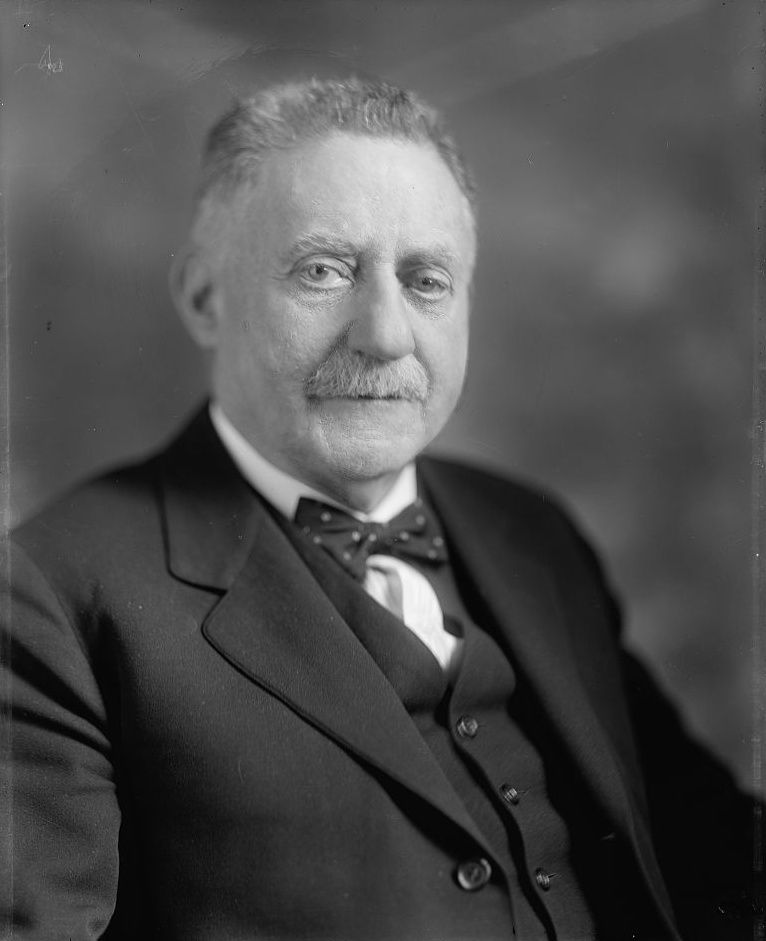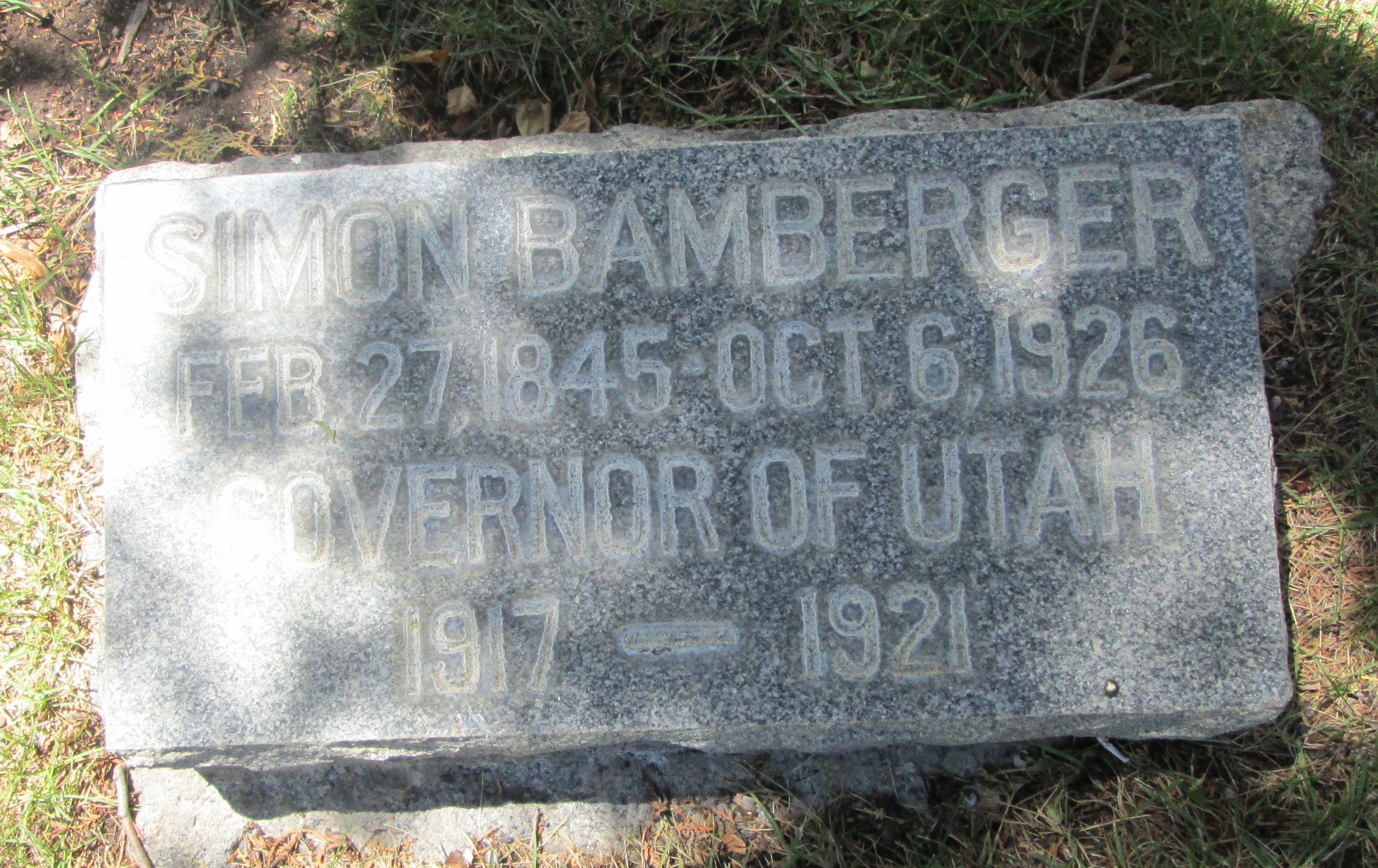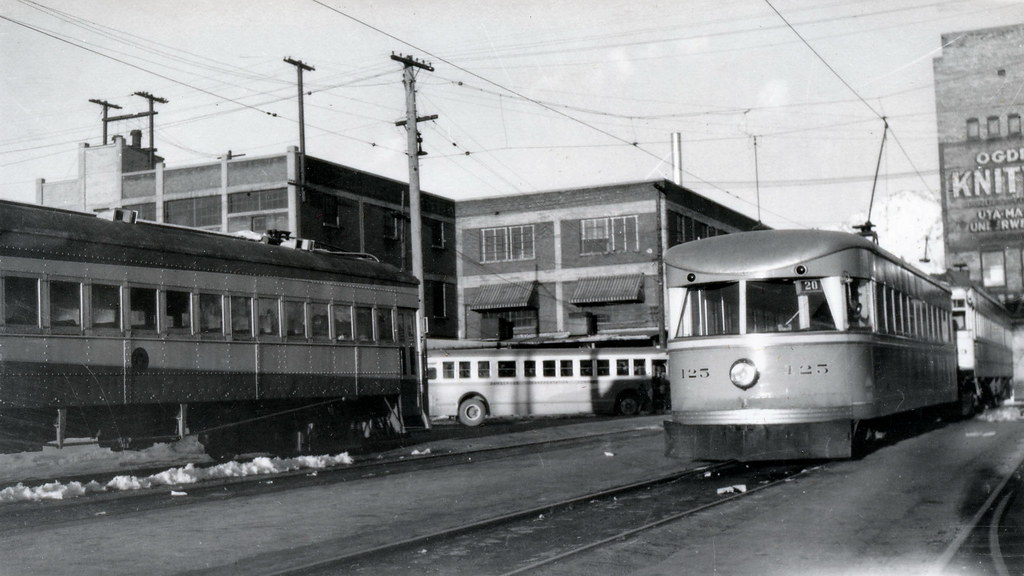-----
 |
| Simon Bamberger in his official governor's portrait. (US Library of Congress) |
Simon Bamberger was born on February 27, 1845, the son of Emmanuel Bamberger and Helen Fleisch. He emigrated to the United States at age 14 and purchased a fare to Cincinnati, Ohio, then a major center for German culture. Unfortunately, after missing a connection in Columbus, he ended up instead in Indianapolis, then Terre Haute, Indiana. His final destination was St. Louis, another German-American hotspot, where he set up a garment business with his brother. While out in Wyoming to collect a debt a few years later, his brother alerted Bamberger that the garment business had failed. The resolute immigrant decided to seek his fortune in Utah, figuring he had nothing left to lose.
 |
| The Centennial Eureka Mine, Juab County, UT (MiningArtifacts.org) |
His first Utah business was as a hotelier in Ogden, but an outbreak of smallpox diverted UP interests away from the town. Bamberger then moved to Salt Lake City, opening up the Delmonico Hotel. In 1872, he purchased the Centennial Eureka Mine in Juab County and became a millionaire two years later when a major silver vein was struck. After contemplating an early retirement, Bamberger decided to invest in the railroad business, starting in 1891 with the Great Salt Lake and Hot Springs Railway (GSL&HS). Its mainline between Salt Lake City and Becks Hot Springs was completed that same year.
Bamberger also purchased a swampy resort called Lake Park just north of Farmington (which the GLS&HS connected to in 1895). The park was originally established by the Denver & Rio Grande Western Railroad as a resort, with Bamberger owning a quarter of it, but the "Lake" had severely receded by the 1895 season and the park closed. Bamberger moved all the buildings closer to Farmington and reopened the new "Lagoon Park" in 1896, giving his riders an incentive to take his railroad from Salt Lake City or Ogden. Lagoon Park was popularly categorized as a trolley park after Bamberger electrified his road.
 |
| A postcard of Lagoon Park's first thrill ride, Shoot the Chutes, which opened in 1899. (Special Collections Dep., J. Willard Marriott Library, University of Utah) |
After opening Lagoon Park, Bamberger reorganized his road as the Salt Lake & Ogden Railroad (SL&O) in 1896. A rapid period of construction then occurred as the main line reached Ogden by July of 1908, with the inaugural service running on August 8, 1908. The line originally started with steam locomotives, earning the nickname the "Dummy Road" after its trolley-bodied steam dummies, but larger steam locomotives would soon be purchased to meet increasing freight demands. This, however, wasn't good enough for Bamberger; he wanted something more than to just be a steam railroad.
By 1910, the "Bamberger" (a popular early nickname for the SL&O) fully electrified with all the furnishings and trappings one could ask for in a modern electric interurban; even the power stations were supplied through Bamberger's own coal mines. The railroad saw its profits primarily from the summer tourist trains to Lagoon Park and running freight services in competition with the Union Pacific between Ogden and Salt Lake City, and its public popularity gave Simon Bamberger the boost to be elected Governor of Utah in 1917 under the Progressive Party. To avoid any conflicts of interest, he formally resigned as President and Director of the SL&O in 1915.
 |
| Bamberger No. 436, originally built by the Niles Car Co. as No. 405 in 1910. (Don Ross) |
 |
| A map of the Bamberger system, along with the other Utah Roads discussed this month. (AmericanRails) |
As a German Jew, Simon Bambeger had a difficult road to governance, but his own wit, humor, and popularity allowed others to see beyond racial stereotypes and accept him. One humorous incident occurred when campaigning among some Norwegian Mormons whose town leader referred to Bamberger as a "damned Gentile." Bamberger, in response, exclaimed, "As a Jew, I've been called many a bad name, but this is the first time in my life that I've been called a 'damned Gentile'!" Bamberger won in a landslide, defeating both his primary and his general election candidates. The SL&O around this time would then change its name to the Bamberger Electric Railroad.
As the Fourth Governor of Utah, Bamberger helped resolve a budget deficit involving misallocated funds, controlled cronyism, recognized labor unions, established worker compensation, ratified the 19th amendment (with Utah pioneering Women's Suffrage both in the territorial legislature and State Constitution in 1869 and 1895), controlled securities and banking in the state, and even helped get water to the more rural areas of Utah. He would only serve one four-year term from 1917 to 1921, as he would be 75 by the time he left office, and declined to run for reelection.
After leaving office, Bamberger resumed working with his businesses, including the railroad. By this time, it had opened new permanent depots in Kaysville and Salt Lake City (which also held the new company offices), and expanded its freight service to include Less-Than-Carload truck service between Salt Lake City and Ogden. Competition was ramping up as the new interstate highway 91 was gaining popularity, which meant the railroad now had to compete with both the Union Pacific and long-haul truck service.
 |
| Simon Bamberger's headstone at B'Nai Israel Cemetery, Salt Lake City (BBW, Find a Grave) |
 |
| The Bamberger Railroad in 1952, showing off a "Bullet" car at right, an original Niles or Jewett car on the left, and a bus in the middle. (John Smatlak) |
 |
| Bamberger Brill Bullet No. 152 being harassed by two buses at the Sale Lake City terminal, year unknown. (John Smatlak) |
Freight operations continued until 1958, when all the wires came down and closed the books on one of Utah's most noteworthy interurban roads. Today, only a short spur between Ogden and Hill Air Force Base remains operated by the Union Pacific. The rolling stock would all find homes in and out of Utah, but that's a story for another time.
 |
| The Bamberger's Ogden, UT, terminal in 1950. (Al Chione, John Smatlak) |
-----

No comments:
Post a Comment